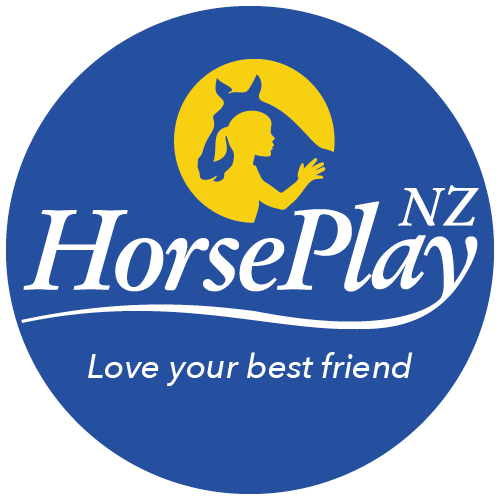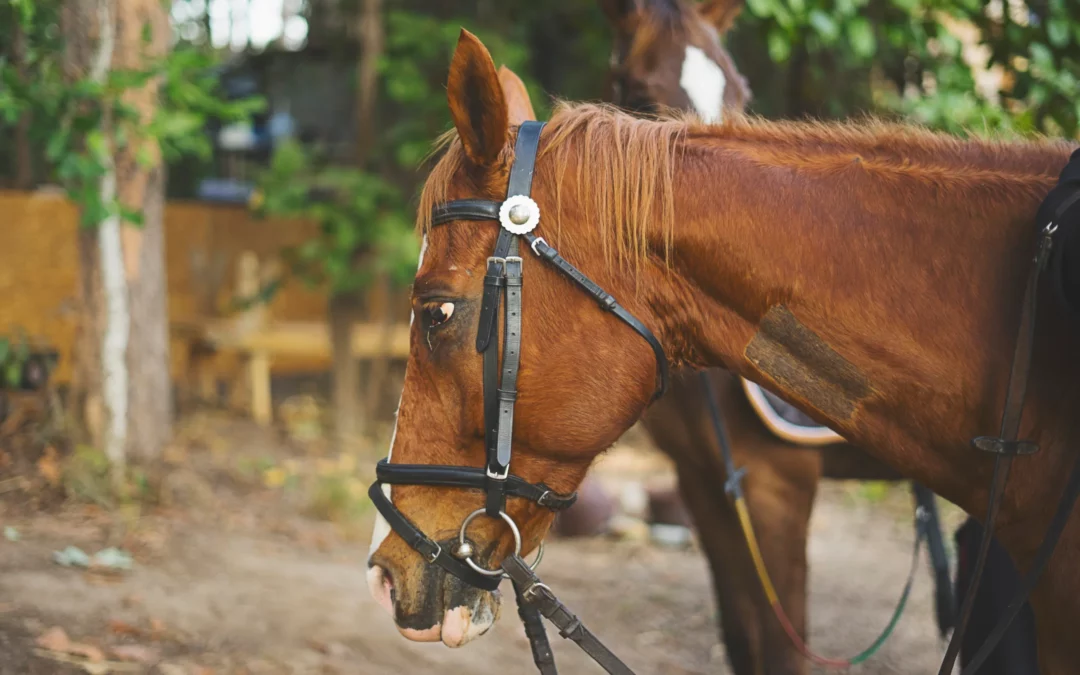Horses are known to exhibit a number of stereotypic behaviours. These include lateral swaying movement of the head and forequarters, wood chewing, weaving, head nodding, licking and circular route tracing. Windsucking or cribbing is a common oral behavioural stereotype. It occurs when the horse grasps a fixed object with its incisor teeth, arches its neck and sucks in air with an audible grunt. Cribbing should be distinguished from wood chewing in which wood is actually consumed and fence rails and barn walls must be replaced. Nevertheless, cribbing can wear down the horse’s teeth, overdevelop its neck muscles, and in some cases be associated with weight loss.
Windsucking is a similar behaviour to cribbing with the difference that no object is grasped in the teeth before the characteristic grunt is made. Because of their similarities the two behaviours are often classed together.
The prevalence of windsucking/cribbing has been reported to be as much as 15% in domesticated horses. The behaviour is defined as “stereotypic” because it is “repetitive” and invariant with no obvious goal or function”.
Stereotypic behaviour is more frequently found in horses that spend a prolonged time stabled. In one particular study, endurance horses had the lowest incidence of stereotypical behaviour (19%) when compared to eventers and dressage horses (more than 30%). In this study the endurance horses spent considerably less time stabled than did the other two groups.
Traditionally windsucking/cribbing was thought to be a cause of recurrent colic or “failure to do well”, but research has shown that the vast majority of horses that wind suck suffer no adverse effects at all. No association has been found between colic and windsucking or cribbing. The main concern with cribbing is that the horse may wear down its teeth, with subsequent difficulty in eating.
There has also been concern from owners that other horses can learn the behaviour but clinical studies have not shown this to be the case. In fact, it is suggested that if other horses in the same environment as the cribber start to do this, it’s a good indication that there is a problem with stable management.
Causes
Proposed causes of cribbing range from boredom and an equine version of obsessive-compulsive disorder (such as constant hand washing in humans) to the presence of ulcers, a genetic predisposition to chronic stress, a desire to nibble, and diet. Cribbing was thought to be caused by the sweet taste of concentrate rations which may lead to the release of opiates which in turn leads to cribbing.
It was thought that the horse was filling the stomach with air, to make the stomach feel “full” and satiated, suggesting that the horses food was somehow inadequate. However a recent study in the United Kingdom showed this to be incorrect. Cribbers do not swallow air. Using fluoroscopy and endoscopy it was clearly shown that the air entered the pharynx and oesophagus but did not enter the stomach. The characteristic noise associated with this behaviour coincides with the in-rush of air through the cricopharynx.
Contrary to some opinion, cribbing does not seem to stimulate endorphin release. The cribbing horse is actually more sensitive rather than less sensitive to pain. Thus, the release of opiates may cause cribbing, but cribbing does not cause a high. A study has found that cribbing horses tend to have a higher base level of both endorphins and cortisol than non-cribbers. These base levels don’t appear to change significantly during episodes of cribbing while horses do tend to record a lower heart rate and a lower temperature when engaged in cribbing.
There has also been a concern that the behaviour is a sign of insufficient exercise. However, a comprehensive study done on 68 horses in commercial stables has found no strong association between the level of exercise and frequency of cribbing or windsucking.
In addition it has also been suggested that these oral behaviours might be an attempt to increase alkaline saliva flow to reduce the increased acidity associated with feeding concentrated rations. Cribbing in foals has actually been found to be associated with gastric ulceration. A field study is currently underway to determine if the use of antacids will help control cribbing in adult horses. An enzyme deficiency when associated with some feed concentrates has also been implicated as a possible causative factor.
Another possible cause of cribbing is a horse’s response to pain from acidic conditions in its stomach and/or large intestine caused by high-concentrate diets. The pain from the high acid levels also could result in opiate release, which could in turn, lead to cribbing. Although certain medications can block opiates, they are too expensive to be practical.
Management techniques
Stable toys, reduced time in stable, mirror, larger stable, more varied view from stable, use of stable chain instead of solid door and increased social contact have all been found to reduce the behaviour to varying degrees. Various methods have been tried to stop windsucking/cribbing, with varying degrees of success. There is no single solution for all horses, and for an individual horse a combination of treatments may need to be tried. More severe methods have also been used in attempting to control cribbing.
Cribbing collars
Numerous straps and collars are available, to physically prevent the behaviour. These are designed to put pressure on the horse’s throat when he begins to crib, but does not hurt the horse or interfere with eating and breathing. The success rate with these is reported to be generally low, as many hors- es are very tolerant to the pressure on their throat and will continue cribbing anyway.
A muzzle (Best Friend Cribbing Muzzle) has been designed to control and discourage cribbing, wood chewing, biting of other horses and people by preventing a horse from being able to p ut any large object in its mouth. This muzzle allows the horse the freedom to eat, drink, exercise and socialise with other horses without being quarantined in a stall.
Paint/spray
Non-toxic sprays or paints, which taste unpleasant to the horse, can be applied to surfaces that the horse uses to crib. The downfall with these products is the need to keep reapplying it and the horse may simply find another surface to crib on.
Diet
One study, looking at horses in racing stables, showed that by offering the horses rel- atively high amounts of roughage, there was a reduction in some stereotypical behaviour, especially if the roughage was offered at frequent intervals. Feeding chaff and hay as roughage seemed to be better than feed- ing hay alone. However, dietary changes seem to reduce some stereotypical behaviours like pacing, rather than windsucking/cribbing.
Indigestion
A preliminary pilot study conducted in France in 1997 suggested that treatment with antacids might have the potential to significantly reduce cribbing.
Surgery
If the discomfort from a cribbing collar doesn’t break the habit, there is a surgical procedure that can be performed to disable the horse from cribbing. The Modified Forssells procedure is performed under general anesthesia and involves clipping the muscles primarily involved in the act of cribbing. The theory behind the surgery is that by removing the muscles, it eliminates the horse’s ability to crib. However, it’s not an all-or-nothing process because the more a horse cribs, the more he recruits other muscles to participate in the act.
While there are no side effects associated with this procedure, there can be side effects associated with any surgery, such as anaesthetic complications and the chance for infection. Surgical techniques such as the Modified Forssells are ineffective over the long term and are no longer recommended.
Many of the mechanical methods that attempt to manage cribbing by preventing the horse from arching its neck can cause tissue damage, stress and pain to the horse and don’t change its motivation to crib. It is much more beneficial to horses for researchers to determine why a horse cribs and to remove the stimulus or treat the cause rather than punish the horse. In the meantime, keeping the horse on good quality pasture with compatible companions as much as possible will usually help control cribbing .
Dr Neil Twentyman BVSc set up the Dairy Flat Veterinary Clinic ten years ago. He graduated 20 years ago, specialises in horses, but treats all species.
Dr Peter Cattin MSc, PhD became interested in horses after his two daughters joined a pony club many years ago and is now a keen rider himself. He is involved in running HorsePlay NZ, an online retail store for equestrian equipment and apparel.

